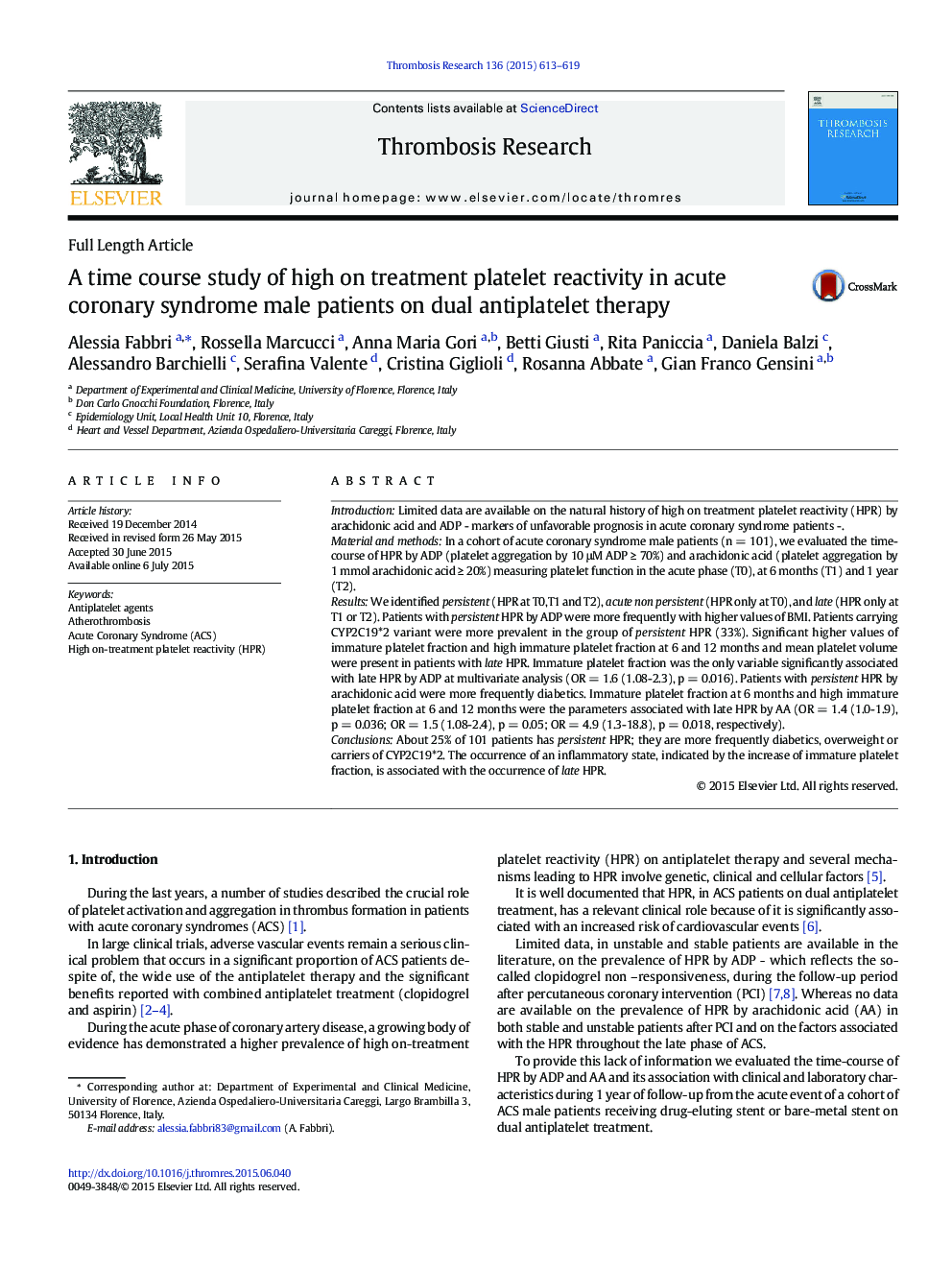| کد مقاله | کد نشریه | سال انتشار | مقاله انگلیسی | نسخه تمام متن |
|---|---|---|---|---|
| 3027076 | 1182938 | 2015 | 7 صفحه PDF | دانلود رایگان |
• Natural history of HPR by ADP and AA after the acute phase of ACS was investigated.
• Persistent, acute non persistent, late, and no HPR patients were identified.
• Persistent HPR patients (25%) were more often overweight, diabetics, CYP2C19*2 carriers.
• The occurrence of an inflammatory state might be associated with late HPR.
IntroductionLimited data are available on the natural history of high on treatment platelet reactivity (HPR) by arachidonic acid and ADP - markers of unfavorable prognosis in acute coronary syndrome patients -.Material and methodsIn a cohort of acute coronary syndrome male patients (n = 101), we evaluated the time-course of HPR by ADP (platelet aggregation by 10 μM ADP ≥ 70%) and arachidonic acid (platelet aggregation by 1 mmol arachidonic acid ≥ 20%) measuring platelet function in the acute phase (T0), at 6 months (T1) and 1 year (T2).ResultsWe identified persistent (HPR at T0,T1 and T2), acute non persistent (HPR only at T0), and late (HPR only at T1 or T2). Patients with persistent HPR by ADP were more frequently with higher values of BMI. Patients carrying CYP2C19*2 variant were more prevalent in the group of persistent HPR (33%). Significant higher values of immature platelet fraction and high immature platelet fraction at 6 and 12 months and mean platelet volume were present in patients with late HPR. Immature platelet fraction was the only variable significantly associated with late HPR by ADP at multivariate analysis (OR = 1.6 (1.08-2.3), p = 0.016). Patients with persistent HPR by arachidonic acid were more frequently diabetics. Immature platelet fraction at 6 months and high immature platelet fraction at 6 and 12 months were the parameters associated with late HPR by AA (OR = 1.4 (1.0-1.9), p = 0.036; OR = 1.5 (1.08-2.4), p = 0.05; OR = 4.9 (1.3-18.8), p = 0.018, respectively).ConclusionsAbout 25% of 101 patients has persistent HPR; they are more frequently diabetics, overweight or carriers of CYP2C19*2. The occurrence of an inflammatory state, indicated by the increase of immature platelet fraction, is associated with the occurrence of late HPR.
Journal: Thrombosis Research - Volume 136, Issue 3, September 2015, Pages 613–619
